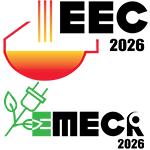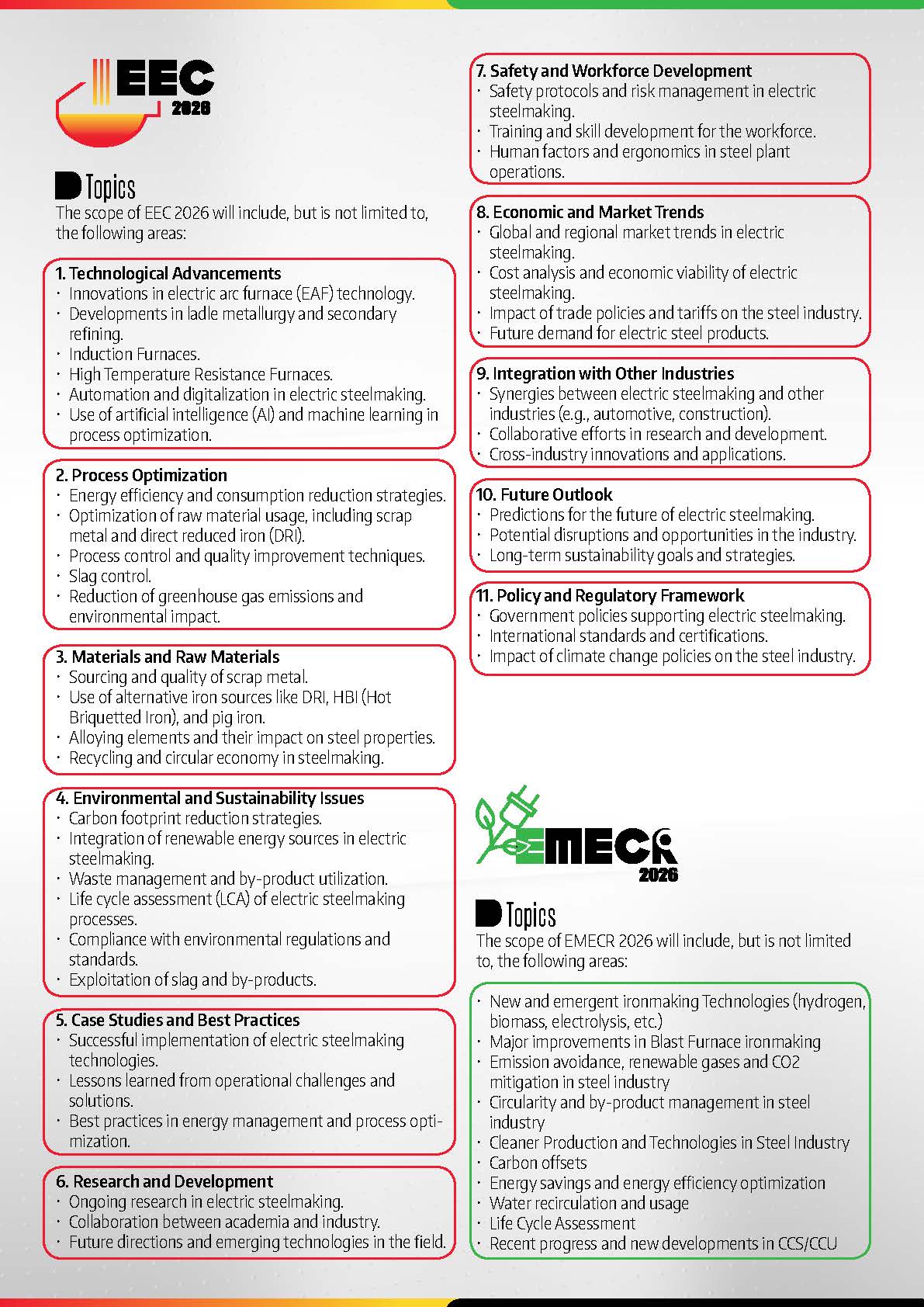-
EEC 1 - Technological Advancements
-
EEC 1.A Innovations in electric arc furnace (EAF) technology
-
EEC 1.B Developments in ladle metallurgy and secondary refining
-
EEC 1.C Induction Furnaces
-
EEC 1.D High Temperature Resistance Furnaces
-
EEC 1.E Automation and digitalization in electric steelmaking
-
EEC 1.F Use of artificial intelligence (AI) and machine learning in process optimization
-
-
EEC 2 - Process Optimization
-
EEC 2.A Energy efficiency and consumption reduction strategies
-
EEC 2.B Optimization of raw material usage, including scrap metal and direct reduced iron (DRI)
-
EEC 2.C Process control and quality improvement techniques
-
EEC 2.D Slag control
-
EEC 2.E Reduction of greenhouse gas emissions and environmental impact
-
-
EEC 3 - Materials and Raw Materials
-
EEC 3.A Sourcing and quality of scrap metal
-
EEC 3.B Use of alternative iron sources like DRI, HBI (Hot Briquetted Iron), and pig iron
-
EEC 3.C Alloying elements and their impact on steel properties
-
EEC 3.D Recycling and circular economy in steelmaking
-
-
EEC 4 - Environmental and Sustainability Issues
-
EEC 4.A Carbon footprint reduction strategies.
-
EEC 4.B Integration of renewable energy sources in electric steelmaking
-
EEC 4.C Waste management and by-product utilization
-
EEC 4.D Life cycle assessment (LCA) of electric steelmaking processes
-
EEC 4.E Compliance with environmental regulations and standards
-
EEC 4.F Exploitation of slag and by-products
-
-
EEC 5 - Case Studies and Best Practices
-
EEC 5.A Successful implementation of electric steelmaking technologies
-
EEC 5.B Lessons learned from operational challenges and solutions
-
EEC 5.C Best practices in energy management and process optimization
-
-
EEC 6 - Research and Development
-
EEC 6.A Ongoing research in electric steelmaking
-
EEC 6.B Collaboration between academia and industry
-
EEC 6.C Future directions and emerging technologies in the field
-
-
EEC 7 - Safety and Workforce Development
-
EEC 7.A Safety protocols and risk management in electric steelmaking
-
EEC 7.B Training and skill development for the workforce
-
EEC 7.C Human factors and ergonomics in steel plant operations
-
-
EEC 8 - Economic and Market Trends
-
EEC 8.A Global and regional market trends in electric steelmaking
-
EEC 8.B Cost analysis and economic viability of electric steelmaking
-
EEC 8.C Impact of trade policies and tariffs on the steel industry
-
EEC 8.D Future demand for electric steel products
-
-
EEC 9 - Integration with Other Industries
-
EEC 9.A Synergies between electric steelmaking and other industries (e.g., automotive, construction)
-
EEC 9.B Collaborative efforts in research and development
-
EEC 9.C Cross-industry innovations and applications
-
-
EEC 10 - Future Outlook
-
EEC 10.A Predictions for the future of electric steelmaking
-
EEC 10.B Potential disruptions and opportunities in the industry
-
EEC 10.C Long-term sustainability goals and strategies
-
-
EEC 11 - Policy and Regulatory Framework
-
EEC 11.A Government policies supporting electric steelmaking
-
EEC 11.B International standards and certifications
-
EEC 11.C Impact of climate change policies on the steel industry
-
-
EMECR
-
EMECR 1. New and emergent ironmaking Technologies (hydrogen, biomass, electrolysis, etc.)
-
EMECR 2. Major improvements in Blast Furnace ironmaking
-
EMECR 3. Emission avoidance, renewable gases and CO2 mitigation in steel industry
-
EMECR 4. Circularity and by-product management in steel industry
-
EMECR 5. Cleaner Production and Technologies in Steel Industry
-
EMECR 6. Carbon offsets
-
EMECR 7. Energy savings and energy efficiency optimization
-
EMECR 8. Water recirculation and usage
-
EMECR 9. Life Cycle Assessment
-
EMECR 10. Recent progress and new developments in CCS/CCU
-
Choose timezone
Your profile timezone:

